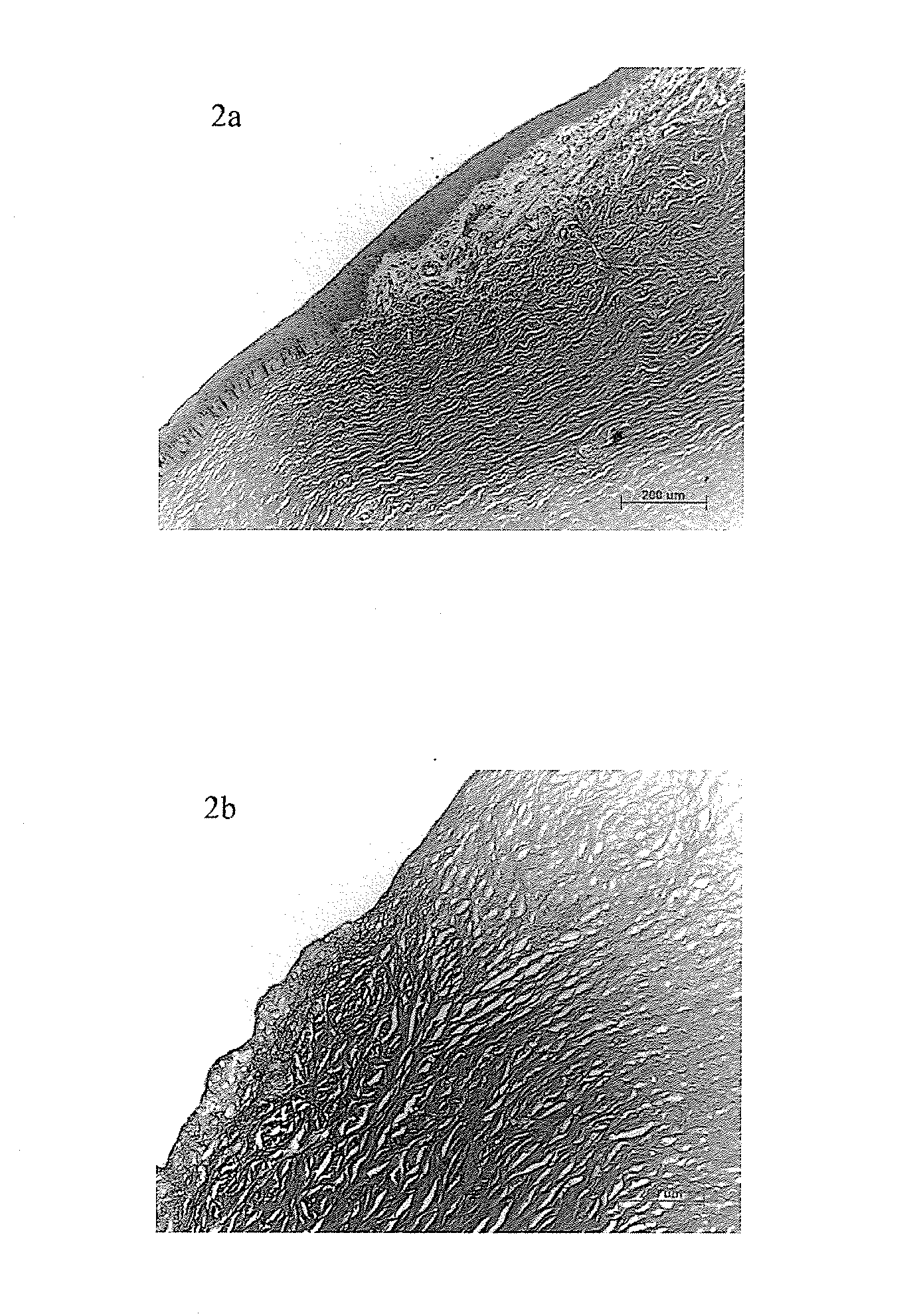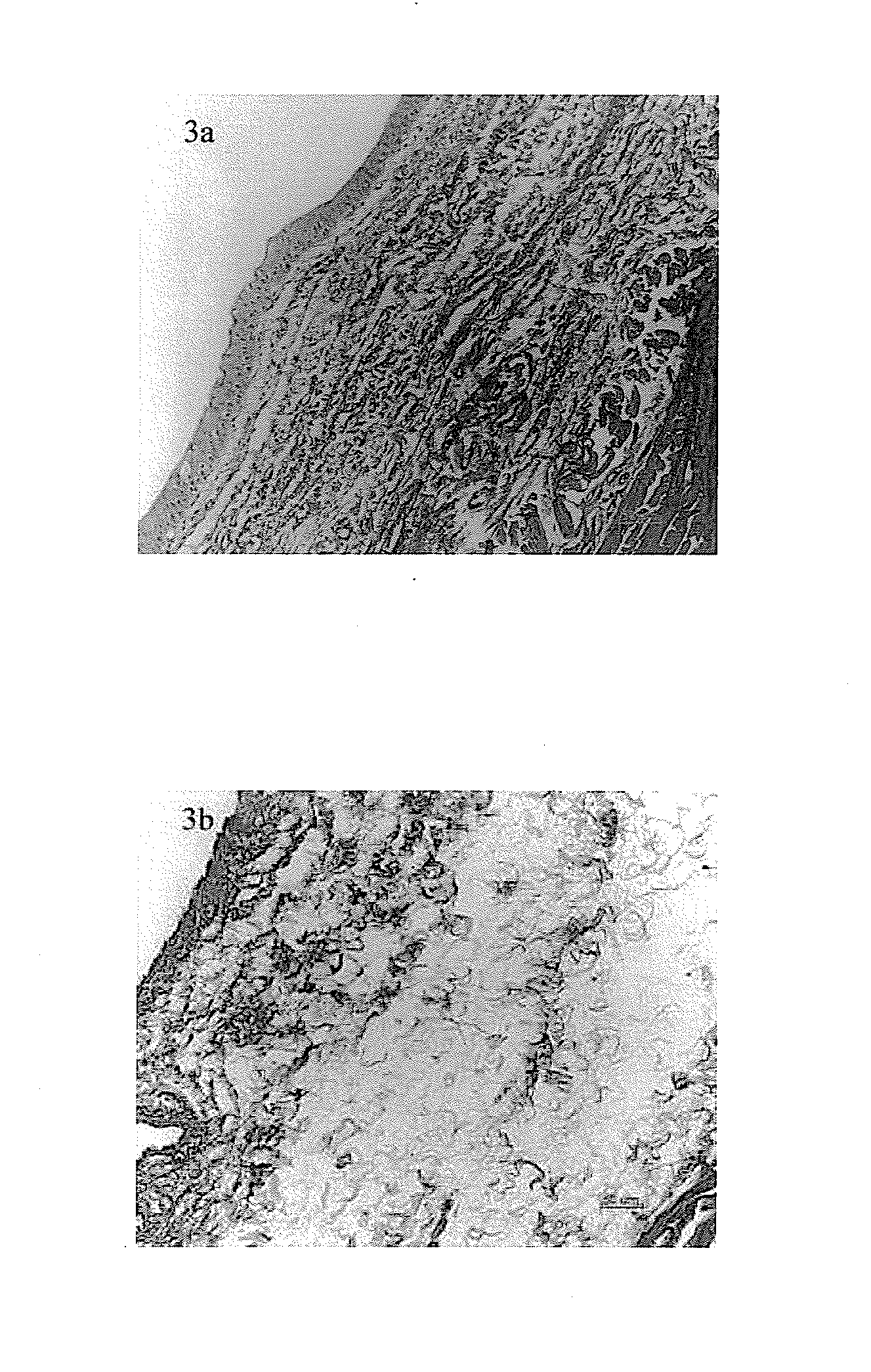Method for preparing the decellularized matrix
a decellularized matrix and matrix technology, applied in the field of tissue engineering, can solve the problems of large problems to be solved, easy immunoreaction, and further destroy the ultra-structure of the extracellular matrix, and achieve the effects of improving the hydrolysis speed of the phospholipase, improving the decellularization results of the phospholipase, and good physical properties and biological functions
- Summary
- Abstract
- Description
- Claims
- Application Information
AI Technical Summary
Benefits of technology
Problems solved by technology
Method used
Image
Examples
embodiment 1
[0047]The purpose of this embodiment is to prepare the decellularized matrix of porcine cornea by using the porcine cornea. (note: the phospholipase solution may contain the phospholipase A1, A2, B1, B2, C, D or any combination thereof. The surfactant may be cholate, deoxycholate, chenodeoxycholate, glycocholate, glycochenodeoxycholate, taurocholate, taurochenodeoxycholate, lipopolysaccharide, lipoprotein, lysolecithin or any combination thereof, and also may be polyethylene glycol or TritonX-100, they have the following identical results.)
[0048]1. the fresh porcine cornea is taken out by using a 10.0 mm trephine at the room temperature according to the routine aseptic operation fundamentals. The porcine cornea is then immersed in the carbonate buffer solution containing antibiotic (100 U / ml of penicillin G, 100 μg / ml of streptomycin sulfate) for 2-5 times, each time for 2-10 minutes.
[0049]2. the porcine cornea is disposed in 10 ml of aseptic pure water, and immersed in the water ba...
embodiment 2
[0055]The purpose of this embodiment is to prepare the decellularized matrix of porcine cornea limbus by using the porcine cornea limbus. (note: the phospholipase solution may contain the phospholipase A1, A2, B1, B2, C, D or any combination thereof, and they have the following identical results.)
[0056]1. the tissue with the area 2 mm outside and inside the fresh porcine cornea limbus is taken out at the room temperature according to the routine aseptic operation fundamentals. The porcine cornea limbus tissue is then immersed in the carbonate buffer solution containing antibiotic (100 U / ml of penicillin G, 100 μg / ml of streptomycin sulfate) for 2-5 times, each time for 2-10 minutes.
[0057]2. the porcine cornea limbus tissue is disposed in 10 ml of aseptic pure water, and immersed in the water bath at 4° C. for duration of 10-60 minutes.
[0058]3. the porcine cornea limbus tissue is disposed in 10 ml of the aseptic phospholipase solution, and then vibrated in the water bath at 4° C. for...
embodiment 3
[0061]The purpose of this embodiment is to prepare the decellularized matrix of porcine conjunctiva by using the porcine conjunctiva. (note: the phospholipase solution may contain the phospholipase A1, A2, B1, B2, C, D or any combination thereof. The surfactant may be a surface-active component that can be generated in biological body or human body, for example cholate, deoxycholate, chenodeoxycholate, glycocholate, glycochenodeoxycholate, taurocholate, taurochenodeoxycholate, lipopolysaccharide, lipoprotein, lysolecithin or any combination thereof, and also may be polyethylene glycol or TritonX-100, and they have the following identical results.)
[0062]1. a fresh porcine conjunctiva tissue with the area of 1×1 cm is taken out at the room temperature according to the routine aseptic operation fundamentals. The porcine conjunctiva tissue is then immersed in the carbonate buffer solution containing antibiotic (100 U / ml of penicillin G, 100 μg / ml of streptomycin sulfate) for 2-5 times, ...
PUM
| Property | Measurement | Unit |
|---|---|---|
| temperature | aaaaa | aaaaa |
| molar concentration | aaaaa | aaaaa |
| area | aaaaa | aaaaa |
Abstract
Description
Claims
Application Information
 Login to View More
Login to View More - R&D
- Intellectual Property
- Life Sciences
- Materials
- Tech Scout
- Unparalleled Data Quality
- Higher Quality Content
- 60% Fewer Hallucinations
Browse by: Latest US Patents, China's latest patents, Technical Efficacy Thesaurus, Application Domain, Technology Topic, Popular Technical Reports.
© 2025 PatSnap. All rights reserved.Legal|Privacy policy|Modern Slavery Act Transparency Statement|Sitemap|About US| Contact US: help@patsnap.com



